Elektromobilität
Lösungen für die vielfältigen Herausforderungen der Netzintegration von Elektroautos
Mit dem steigenden Anteil an Elektroautos (engl. Electric Vehicles, EVs) ergeben sich für den Stromsektor zahlreiche Fragen bezüglich der Netzintegration:
- Integration von EVs in Netze: Hosting Kapazität von Verteilnetzen und optimale Standorte für (Schnell)-Ladestationen?
- Alternativen zum Netzausbau: Pufferspeicher und gesteuertes Laden?
- Systemdienliche und kosteneffiziente Nutzung von EVs mit möglichst geringen Nutzereinschränkungen: Eigenverbrauchsoptimierung, Vehicle to Grid (V2G)?
- Bündelung von EVs und Kommunikation mit dem Netzbetreiber?
- Netzanschlussregeln (Grid Codes): Welche Regeln und Eingriffsmöglichkeiten sollten gelten? Wie wird die Konformität eines EVs mit gültigen Regeln nachgewiesen?
Für verschiedene Akteure sind verschiedene Fragen relevant und es gibt unterschiedliche Lösungsansätze:
»Für Netzbetreiber
»Für Hersteller
»Für Regulierungsbehörden
»Für Betreiber von EV Flotten
Für Netzbetreiber:
Insbesondere Verteilnetzbetreiber sind als erstes von der steigenden Anzahl an Elektroautos betroffen. Bei vielen Elektroautos im Niederspannungsnetz besteht die Gefahr einer Netzüberlastung, wenn ein großer Anteil der Autos gleichzeitig lädt. Ab welcher Anzahl Elektroautos eine Netzüberlastung droht, lässt sich mit einer Analyse der Hosting Kapazität herausfinden. Unter Annahme von Gleichzeitigkeitsfaktoren für das Laden von EVs kann Energynautics entsprechende Analysen bereitstellen. Für Netzsimulationen verwenden wir üblicherweise DIgSILENT PowerFactory und verknüpfen unsere Modelle auch mit GIS-Daten, damit Sie genau sehen, wo welche Elemente überlastet werden.
Gerne beraten wir Sie zu möglichen Abhilfemaßnahmen wie Netzausbau oder Möglichkeiten in das Laden einzugreifen, was durch §14a des EnWG zukünftig an Bedeutung gewinnen wird. Eingriffe in steuerbare Verbraucher sollten diskriminierungsfrei, sicher und mit minimaler Nutzereinschränkung erfolgen. Um dies sicherzustellen, sollten die Eingriffe möglichst automatisiert von einem smarten Algorithmus erfolgen. In vorherigen Projekten hat Energynautics bereits verschiedene Algorithmen für diese Anwendung implementiert. Gemeinsam mit Ihnen finden wir die beste Lösung für Ihr Netz und berücksichtigen dabei sowohl technische als auch ökonomische Aspekte!
Andere Herausforderungen entstehen bei der Planung von neuen, öffentlichen Ladestationen. Insbesondere an Schnelladestationen (z.B. an Autobahnen) werden sehr große Leistungen benötigt. Dabei muss bedacht werden, dass die Elektrifizierung sich nicht nur auf PKWs beschränkt, sondern in Zukunft auch LKWs zunehmend elektrisch fahren werden. Für den Güterverkehr sind Ladeleistungen im Megawatt Bereich zu erwarten. Ein zukunftssicheres Netz muss also in der Lage sein, solche Ladeleistungen zur Verfügung zu stellen. Wir unterstützen Sie bei der Suche nach geeigneten Standorten, beim Überprüfen der Eignung eines Netzanschlusspunktes und bei innovativen Lösungen, wie z.B. Pufferbatterien!
Für Hersteller:
Die Nutzung der Flexibilität von Elektroautos wird zunehmend in der Energiebranche diskutiert. Dabei steht auch das bidirektionale Laden (Vehicle to Grid, V2G) im Fokus und erste Hersteller rüsten ihre Fahrzeuge mit dieser Funktionalität aus. Allerdings gilt es bei der Nutzung des bidirektionalen Ladens die lokalen Netzanschlussrichtlinien zu beachten. Die Grid Codes der europäischen Länder sind zwar durch den RfG (Requirements for Generators) harmonisiert, unterscheiden sich jedoch in Details und insbesondere im Nachweis der Konformität. In Deutschland gelten bspw. für Autos mit V2G Funktion dieselben Anforderungen wie für stationäre Batteriespeicher. Das beinhaltet z.B. Anforderungen an Oberschwingungen, Fault-Ride-Through Fähigkeit (FRT), Blindleistung, u.v.m.. Die Konformität mit dem Grid Code wird durch Messungen und Herstellererklärungen nachgewiesen und in einem Einheitenzertifikat festgehalten. Zertifikate können nur durch akkreditierte Zertifizierungsinstitute ausgestellt werden.
Wir beraten Sie gerne zu den landesspezifischen Anforderungen an V2G oder Fahrzeugladung im Allgemeinen sowie zum notwendigen Konformitätsnachweis.
Für Regulierungsbehörden:
Schon seit einiger Zeit befinden sich Netzanschlussregeln weltweit im Wandel, um die neue Realität mit immer mehr variablen Erneuerbaren Erzeugern, die dezentral über Umrichter angeschlossen sind, zu berücksichtigen. In den letzten Jahren wurde auch das Thema Netzintegration von Elektromobilität immer wichtiger. Hier stellen sich vielfältige Fragen aus verschiedenen Bereichen:
- Welche Ladestecker sollen verwendet werden?
- Wie sollen Netzbetreiber mit ladenden EVs kommunizieren?
- Welche Regeln gelten für bidirektionales Laden?
- Welche Funktionalität ist nötig um den sicheren und stabilen Netzbetrieb nicht zu gefährden, z.B. Reaktion auf Frequenzabweichungen, FRT-Fähigkeit, Anforderungen an Oberschwingungen und Asymmetrien, etc.?
- Wie wird die Konformität mit dem Grid Code nachgewiesen?
- Welche Tarife, Abrechnungsmodelle und Stromzähler sind sinnvoll?
Wir unterstützen Sie bei der Überarbeitung Ihres Grid Codes und bei der Bestimmung angemessener Richtlinien für Ihr Land.
Für Betreiber von EV-Flotten:
Die Elektrifizierung von Fahrzeugen betrifft nicht nur den personalisierten Verkehr, sondern vor allem auch Flotten, z.B. die Fahrzeuge von Logistik- und Busunternehmen. Bei der Elektrifizierung von Flotten besteht die Herausforderung darin, dass die meisten Fahrzeuge tagsüber unterwegs sind und erst abends in das Depot bzw. Logistikzentrum zurückkehren und dann zeitgleich geladen werden. Dadurch kann es leicht zu Netzanschlusspunktüberlastungen bis hin zu Netzüberlastungen kommen.
In Situationen, in denen ein LKW nur kurzzeitig an einem Ort steht, z.B. zum Entladen, aber die Batterie in dieser Zeit trotzdem möglichst vollgeladen werden soll, ist die hohe benötigte Ladeleistung die größte Herausforderung.
Neben teurem und langwierigem Netzausbau bieten sich innovative Lösungen an, wie z.B. Pufferbatterien, ein smart gesteuertes Laden der Elektrofahrzeuge oder die Kombination mehrerer Lösungen. Wir beraten Sie neutral und herstellerunabhängig, um mit Ihnen gemeinsam den technisch und wirtschaftlich optimalen Lösungsansatz für Ihre Flotte oder Ihren Betrieb zu finden!
Ihre Herausforderung bzw. Ihre Projektidee ist nicht dabei? Kontaktieren Sie uns und wir finden eine individuelle Lösung für Ihre Fragen!
Das könnte Sie auch interessieren:
Eine Auswahl aus unserem Portfolio.
Referenzen filtern

Bewertung verschiedener Anschlusspunkte einer neuen HGÜ-Verbindung
Analyse zur technischen Machbarkeit einer neuen HGÜ-Verbindung zwischen Spanien und Italien
mehr erfahren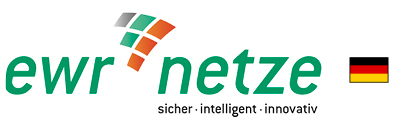
Last- und Erzeugungsprognosen für die EWR Netz GmbH
Energynautics führte geografisch detaillierte Last- und Erzeugungsprognosen für das Verteilnetz der EWR Netz GmbH durch. Der Fokus lag auf dem künftigen Wachstum dezentraler Erzeugung und der Elektrifizierung von Endverbrauchern bis zum Jahr 2040.
mehr erfahren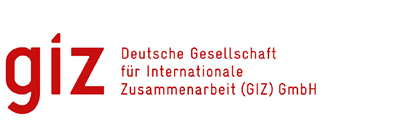
Kostengünstiges, netzverträgliches Laden für Bangladesch
Ein intelligentes Ladegerät für Ladestationen für 3-Rad-Fahrzeuge in Bangladesch wurde entwickelt, um die Netzbelastung während der Spitzenlastzeiten zu verringern
mehr erfahren
Handbuch zur Elektrofahrzeug-Integration
Energynautics hat zusammen mit RE-xpertise ein Handbuch über bewährte Verfahren für die Integration von Elektrofahrzeugen in das Verteilnetz entwickelt.
mehr erfahren
Stromnetzplanung für die IRRP-Entwicklung in den CARICOM-Staaten
Im Auftrag der GIZ unterstützte Energynautics das Caribbean Centre for Renewable Energy and Energy Efficiency (CCREEE) bei der Planung von Stromerzeugung und Netzausbau in Guyana / Trinidad und Tobago.
mehr erfahren
NGESO Blindleistungsmarktdesign
Entwicklung einer marktbasierten Lösung für das Blindleistungsmanagement im britischen Übertragungsnetz zur kosteneffizienten Sicherung der Spannungshaltung in einem kohlefreien Versorgungssystem.
mehr erfahren
Entwicklung von Generatormodellen zum Nachweis der Konformität mit Grid Codes
Um an das Stromnetz angeschlossen zu werden, müssen Erzeugungseinheiten bestimmte Fähigkeiten nachweisen. Dies geschieht (teilweise) mit präzisen Simulationsmodellen. Energynautics entwickelt diese Art von Simulationsmodellen für alle Arten von Technologien.
mehr erfahren
Optimale Anlagendimensionierung für den Markbygden Windpark
Energynautics hat das statische Simulationsmodell für die dritte Phase von Europas größtem Windpark entwickelt und eine Reihe technoökonomischer Studien durchgeführt.
mehr erfahren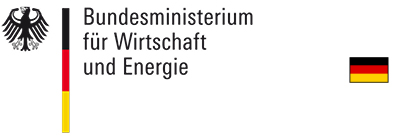
Netzbetriebsoptimierung mit der FNN-Steuerbox
Ziel des Projekts ist die Entwicklung einer Steuerbox, der Smecon-Box, die lokale Intelligenz und zentrale Ansteuerbarkeit für Elektroautos, Photovoltaikanlagen, Wärmepumpen und Co kombiniert, um den Netzbetrieb zu optimieren.
mehr erfahren
Beratungsdienstleistungen im Rahmen des North Sea Wind Power Hub Programms
Die Studie untersucht den potenziellen Mehrwert von Offshore-Windenergie-Hubs in der Nordsee im Vergleich zu radial angebundenen Windparks mit dem Ziel die Integration von Offshore-Windleistung zu optimieren.
mehr erfahren
Intelligente Wechselrichter (Smart Inverters) für die dezentrale Energieversorgung
Ausarbeitung von Empfehlungen zur Einbindung von intelligenten Wechselrichtern, um die Aufnahmekapazität für PV-Anlagen in Verteilnetzen und die Versorgungssicherheit zu erhöhen.
mehr erfahren
Überprüfung von Systemdienstleistungen für das mexikanische Stromnetz
Energynautics unterstützte ein Büro der mexikanischen Regulierungsbehörde bei der laufenden Überprüfung der Systemdienstleistungen, die für eine weitere Steigerung des Anteils erneuerbarer Energien erforderlich sind.
mehr erfahren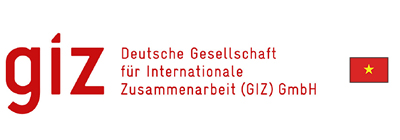
Risikomanagement-Richtlinien für Solar-PV-Projekte in Vietnam
Das Ziel dieses Projekts war die Entwicklung von Handbüchern zum Risikomanagement, die technische Richtlinien für bodenmontierte und schwimmende Solar-PV-Projekte von der Entwicklungs- bis zur Rückbauphase vorgeben.
mehr erfahren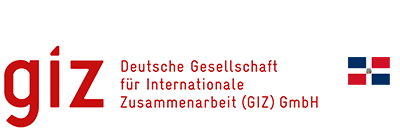
Überarbeitung der Grid Codes für das dominikanische Stromsystem
Im Auftrag der GIZ führte Energynautics eine Überarbeitung der Grid Codes der Dominikanischen Republik im Hinblick auf die Integration von Erneuerbaren Energien durch.
mehr erfahren
Forschungsstudie zu nachhaltiger Energiewende und Entwicklungsmöglichkeiten der Energieinfrastruktur
Ziel der Studie war es, Input für die Umsetzung der Resolution Nr. 55 “ Vietnam’s National Energy Development Strategy to 2030, vision to 2045″ des Politbüros der vietnamesischen Partei und weitere Orientierungshilfen für eine nachhaltige Energiewende in Vietnam zu liefern.
mehr erfahren
Die Rolle der indischen Verteilnetzunternehmen (DISCOMS) bei der Nutzung von netzstützenden Systemdienstleistungen durch PV-Dachanlagen und Batteriespeicher.
Energynautics wurde von der GIZ beauftragt Systemdienstleistungen zu analysieren, die von PV-Anlagen und Batterien erbracht werden können, um Verteilnetze in Indien zu unterstützen.
mehr erfahren
Verteilnetzstudie in der Dominikanischen Republik
Energynautics untersuchte den maximal möglichen Anteil an PV-Systemen in dominikanischen Verteilnetzen.
mehr erfahren
EU Network Codes für Estland
Studie für estnisches Konsortium mit dem Ziel, internationale Erfahrungen zu verschiedenen Grid Code-relevanten Themen für den estnischen Anwendungsfall zu sammeln.
mehr erfahren
ETS Plus Emissionshandel: Strommarktsimulationen für das IFW
Energynautics führte als Unterauftragnehmer des Instituts für Weltwirtschaft in Kiel im Rahmen eines vom BMEL geförderten Projekts Simulationen zur Ermittlung des Einflusses von steigenden Emissionszertifikatpreisen auf den deutschen Strommarkt durch.
mehr erfahren
Überarbeitung von Netzanschlussregeln in der Mongolei
Im Auftrag der Weltbank unterstützte Energynautics 2018/19 den mongolischen Übertragungsnetzbetreiber bei der Überarbeitung der Netzanschlussregeln für EE-Anlagen.
mehr erfahren
Übertragungsnetzstudie Tschechien
Die Studie für ein Konsortium aus NGOs untersucht den Einfluss eines weitgehenden Kohleausstiegs in Tschechien im Jahr 2030 auf den Strommarkt und das tschechische Übertragungsnetz.
mehr erfahren
REEP 1000 Islands: Entwicklung Erneuerbarer Energien in Indonesien
Im Auftrag der GIZ unterstützen Energynautics, Cadmus und ABO Wind die indonesische Regierung und das staatliche Energieversorgungsunternehmen bei der Integration Erneuerbarer in die Elektrizitätsversorgung. Das Projekt beinhaltet u.a. Netzintegrationsstudien, die Entwicklung von Spezifikationen für PV-Systeme, Weiterbildungsseminare und eine Überarbeitung der Netzanschlussregeln für EE-Anlagen.
mehr erfahren
Vietnam Technologiebewertung
Bereits im Jahr 2012 veröffentlichte Vietnam eine Smart Grid Roadmap, deren verschiedene Phasen die Umsetzung von Smart Grids in Vietnam definieren. Um die Umsetzung von Smart Grids zu unterstützen, hat Energynautics die aktuelle Smart Grid-Entwicklung bewertet und Empfehlungen erarbeitet.
mehr erfahren
PV Port & Store
Bis zum Jahr 2022 möchte Indien 40 GW Aufdach-Solaranlagen installieren. Um dieses Ziel zu unterstützen, entwickelte Energynautcs ein standardisiertes und einfach zu installierendes PV-Batterie-System, welches eine unterbrechungsfreie Stromversorgung, die Maximierung des Eigenverbrauchs und die Reduzierung der hohen abendlichen Verbrauchsspitze gewährleistet.
mehr erfahren
Weiterbildung für Netzbetreiber in Süd-Ost-Asien (ASEAN-Region)
Um den Ausbau von erneuerbaren Energien in der ASEAN-Region zu unterstützen, hat Energynautics drei 3-Tages-Workshops zum Thema Netzintegration von erneuerbaren Energien in Süd-Ost-Asien durchgeführt.
mehr erfahren
Technische Richtlinien für Aufdach-Solaranlagen in Vietnam
Zur Unterstützung der Elektrizitäts-Regulierungsbehörde in Vietnam hat Energynautics technische Richtlinien (Netzanschlussregeln) für Aufdach-Solaranlagen in Vietnam entwickelt, unter Berücksichtigung bestehender Vorschriften, internationaler Erfahrungen und dem Stand der Technik.
mehr erfahren
Messkampagne zur Bestimmung der Spannungsqualität bei einer großen PV-Anlage
Zur Stromversorgung des Al Zaatari Flüchtlingslager in Jordanien wurde eine 12,9 MWp große PV-Anlage errichtet. Um den Einfluss der PV-Anlage auf die Spannungsqualität zu bestimmen, hat Energynautics eine Messkampagne an verschiedenen Punkten im lokalen Netz durchgeführt.
mehr erfahren
REEP 1000 Islands
Energynautics wurde von der GIZ beauftragt, Pilotstudien zur Integration erneuerbarer Energien in zwei indonesischen Inselsystemen durchzuführen. Die indonesische Regierung hat ein landesweites Ziel für 23% Strom aus erneuerbaren Quellen für 2025 festgelegt. Hybridsysteme auf den mehr als 17.000 kleinen indonesischen Inseln können dazu einen signifikanten Beitrag leisten.
mehr erfahren
3DMicroGrid
Microgrids sind eine vielversprechende Lösung zur Integration erneuerbarer Energien. 3DMicroGrid behandelt den Entwurf, die Entwicklung und die Demonstration eines zukunftssicheren, aktiven und smarten Microgrids zur Integration und Optimierung verschiedener Energiequellen und Lasten.
mehr erfahren
DESIGNETZ
Innovative Regelungskonzepte und Betriebsweisen sind für einen kosteneffizienten Verteilnetzausbau nötig. Energynautics analysiert die Auswirkungen und erarbeitet eine Umsetzung im Sinne des BDEW Ampelkonzepts.
mehr erfahren
Leitfaden zur Integration variabler erneuerbarer Energien
Wie können volatile erneuerbare Energien ins Philippinische Stromnetz eingebunden werden? Ein von Energynautics verfasster Leitfaden zeigt dies!
mehr erfahren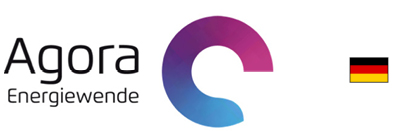
Innovative Netze-Toolbox
Der Netzausbau ist eine wichtige Flexibilitätsoption für die Integration Erneuerbarer Energien: Wir zeigen, welche Optimierungsmöglichkeiten für eine optimale Ausnutzung der Stromnetze bei hohen Erneuerbaren-Energien-Anteilen bestehen.
mehr erfahren
Europäische Netzstudie 2030/2050
100% erneuerbare Energien in 2050? Im Auftrag von Greenpeace zeigen wir, wie das europäische Netz optimal gestaltet werden sollte, um das Energy [R]evolution Szenario zu verwirklichen.
mehr erfahren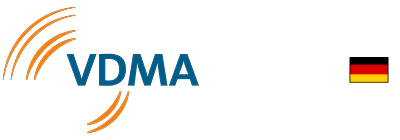
VDMA Studie zum
Verhalten von VKM bei Netzfehlern
Bei Spannungseinbruch müssen Verbrennungskraftmaschinen stabil am Netz verbleiben. Mit Hilfe von Modellen und Simulationen zeigen wir, welche Lösungen besonders vielversprechend sind.
mehr erfahren
Netzintegrationsstudie Seychellen
Erneuerbare Energien auf Inseln bringen wirtschaftliche Vorteile, aber auch große technische Herausforderungen: Wir zeigen, wie es auf den Seychellen optimal umgesetzt werden kann.
mehr erfahren
Barbados Grid Code Review
Das Ziel bis 2029: 29% erneuerbare Energien. Vor diesem Hintergrund hat Energynautics sich die Netzplanungs- und Netzbetriebsgrundsätze angesehen und wesentlich überarbeitet.
mehr erfahren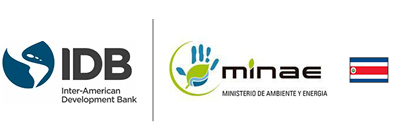
Netzintegrationsstudie Costa Rica
100% Erneuerbare Energien schon heute: Hervorragende Standorte für Wind-, Sonnen- und Wasserkraft machen es möglich. Wir zeigen, wie das System dafür fit gemacht werden muss.
mehr erfahren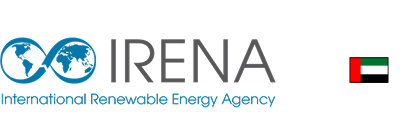
IRENA Grid Code Studie
In einer technischen Analyse zeigen wir, welche Aspekte bei der Erstellung von Netzanschlussregeln beachtet werden sollten, um einen sicheren Netzbetrieb mit erneuerbaren Energien zu erreichen.
mehr erfahren
Snoopi – Smart Network Control with PV Infeed
PV Batteriesysteme können mehr als nur den Eigenverbrauch zu optimieren: Mit unserem Regler stabilisieren wir die Spannung und ebnen so den Weg für eine höhere PV-Penetration.
mehr erfahren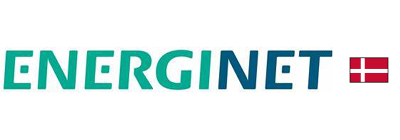
Cell Controller Projekt
Entwicklung und Test eines universellen High-End Smart-Grid-Reglers. Das Highlight: Vollständig autonomer Inselbetrieb des Verteilnetzes nur mit dezentralen Erzeugungsanlagen.
mehr erfahren
Verteilnetzstudie
Rheinland-Pfalz
100% Erneuerbare Energien bis 2030, so das Ziel der Landesregierung. Wir zeigen auf, was das für die Verteilnetze in RLP bedeutet und welchen Beitrag Smart-Grids leisten können.
mehr erfahren